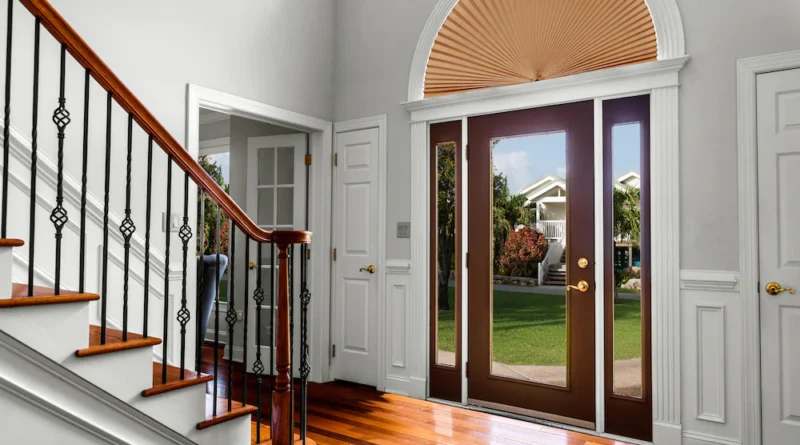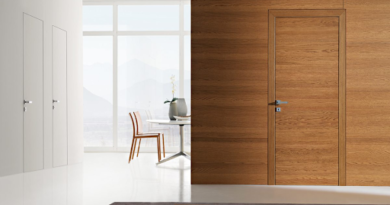Introduction: What To Use To Block Out Light rom door frame
When it comes to achieving a restful sleep or maintaining a home theater environment, unwanted light streaming through door frames can be a nuisance. Light leaks not only disrupt sleep cycles but also diminish the overall ambiance of a room. This comprehensive guide will detail what to use to block out light from door frame, ensuring you achieve the perfect balance of comfort, privacy, and aesthetic appeal.
Why Light Blocking Is Essential for Comfort and Health
Exposure to artificial light during sleep can interfere with the body’s circadian rhythm, which can lead to poor sleep quality and various health issues. By blocking out light from your door frame, you create an environment conducive to relaxation and rest. This section will delve into why it is crucial to block out light and how it affects your well-being.
Health Impacts of Light Exposure
Scientific studies have shown that even minimal light exposure at night can impact melatonin production. This hormone is essential for regulating sleep. Chronic exposure to light during rest periods can lead to sleep disorders and even long-term health problems like obesity and depression.
Enhanced Home Comfort
Blocking light not only supports healthier sleep but also enhances overall comfort in living spaces. Whether you’re working a night shift, need complete darkness for a home theater, or just prefer a dark room for relaxation, eliminating light gaps helps create a more serene atmosphere.
Common Sources of Light Leaks Around Door Frames
Understanding where light leaks occur can guide you to effective solutions. Light commonly seeps in through:
- Top and bottom edges of the door frame
- Gaps along the sides
- Imperfect weatherstripping
This section will help you identify the sources of light leaks before tackling the solutions.
Top Solutions: What to Use to Block Out Light from Door Frame
There are multiple approaches to blocking out light, depending on your needs, budget, and preferences. Below, we break down the most effective solutions.
1. Door Draft Stoppers
Door draft stoppers are an effective tool for blocking light that enters through the bottom of the door. These stoppers are easy to install and often double as noise reducers and insulation against drafts.
Types of Draft Stoppers:
- Weighted Fabric Stoppers: Simple and removable.
- Sliding Under-Door Seals: Permanent but more effective.
2. Weatherstripping
Weatherstripping is a highly effective solution for sealing gaps between the door and the frame. This material is durable, easy to install, and can also help with energy efficiency.
Common Types of Weatherstripping:
- Foam Tape: Inexpensive and great for narrow gaps.
- Vinyl Weatherstripping: More robust and ideal for larger gaps.
3. Blackout Strips and Gaskets
Adhesive blackout strips are made specifically for blocking light leaks. They can be placed around the frame to create a seal, ensuring minimal to no light enters through the edges.
Installation Tips:
- Measure the length of each side of the door frame.
- Clean the surface before applying the strips for better adhesion.
- Press firmly for a long-lasting bond.
4. Door Sweeps
A door sweep attaches to the bottom of the door and can block out light as well as drafts and noise. These are particularly effective when combined with weatherstripping for a comprehensive solution.
Types of Door Sweeps:
- Metal and rubber sweeps: Ideal for high-traffic doors.
- Automatic door sweeps: Retract when the door is opened, maintaining aesthetics.
5. Blackout Curtains
If light leaks are extreme, consider pairing your door solutions with blackout curtains. Though traditionally used for windows, blackout curtains can be adapted for doors, especially patio or French doors.
Innovative Materials for Blocking Light
Exploring different materials can help you choose the best solution for your door frame. Here’s a look at some of the most efficient materials:
Adhesive Foam Tape
A versatile option that is affordable and easy to install. Adhesive foam tape is ideal for sealing narrow gaps along the door frame.
Pros:
- Affordable and easy to cut to size.
- Provides some noise insulation.
Cons:
- May wear out with time and need replacement.
Silicone Gaskets
These are durable, flexible, and offer superior light-blocking capabilities. Silicone gaskets can be installed along the sides and top of the door frame.
Benefits:
- Long-lasting and weather-resistant.
- Maintains its shape over time.
Draft Excluders
These flexible fabric excluders are typically placed at the base of the door but can also be adapted for use along vertical door edges. They come in various colors and patterns to match your décor.
Tips for Maximizing Light Blocking Efficiency
Here are expert recommendations for ensuring your efforts to block out light from the door frame are as effective as possible:
- Double-check measurements: Always measure your door frame precisely to avoid gaps after installation.
- Layer solutions: Combining methods like door sweeps, blackout strips, and weatherstripping can enhance results.
- Routine maintenance: Check and replace any worn-out materials periodically to maintain optimal performance.
Aesthetic Considerations
When implementing solutions to block light, maintaining the look of your home can be important. Here’s how you can balance function and form:
Matching Colors and Materials
Choose materials that match your door and frame for a seamless look. For example, black silicone gaskets pair well with darker doors, while transparent options are ideal for white or light-colored doors.
Minimalist Solutions
For those who want a clean, uncluttered appearance, opt for low-profile products like magnetic weatherstripping or sleek under-door sweeps.
DIY Installation: Step-by-Step Guide
Installing these light-blocking solutions can often be done as a DIY project. Here’s a brief guide for the most popular methods:
Installing a Door Sweep
- Measure the width of your door and purchase a sweep accordingly.
- Mark the location for the screws or adhesive.
- Attach the sweep using a drill or strong adhesive.
- Test the door movement to ensure it opens and closes smoothly.
Applying Weatherstripping
- Clean the door frame thoroughly to ensure the adhesive sticks.
- Cut the weatherstripping to match the door frame’s dimensions.
- Press the adhesive side firmly along the door frame.
- Test the door closure to check for proper seal and adjust as needed.
How Light Blocking Contributes to Energy Efficiency
Blocking light isn’t just about sleep; it’s also an excellent way to conserve energy. By ensuring that your door frames are properly sealed, you can reduce heat transfer and maintain indoor temperatures more efficiently.
Benefits of Proper Sealing:
- Reduced energy bills.
- Enhanced insulation during hot and cold weather.
- Improved indoor air quality.
Conclusion: Choosing the Best Solution for Your Home
There’s no one-size-fits-all answer when determining what to use to block out light from a door frame. The best approach depends on your specific needs, budget, and aesthetic preferences. Whether you opt for simple adhesive foam tape or invest in custom silicone gaskets, the result will be a darker, more comfortable living space.
Remember, experimenting with a combination of methods, such as door sweeps and blackout strips, can lead to superior results. Regular maintenance will also ensure that your solutions continue to work effectively over time.
FAQs
What is the most effective way to block light from a door frame?
Using a combination of weatherstripping and a door sweep is often the most effective way to block out light completely.
Can I install weatherstripping myself?
Yes, most weatherstripping comes with easy-to-follow installation instructions, making it suitable for DIY projects.
Do blackout curtains work on doors?
Yes, blackout curtains can be adapted to work on doors, particularly for French or sliding doors.
How long do door sweeps last?
High-quality door sweeps can last several years, though their longevity depends on the level of wear and tear.
Is weatherstripping expensive?
Weatherstripping is generally affordable, with prices varying depending on the material and quality.
Will blocking light affect my energy bills?
Yes, properly sealed doors help improve insulation, potentially lowering energy costs.




